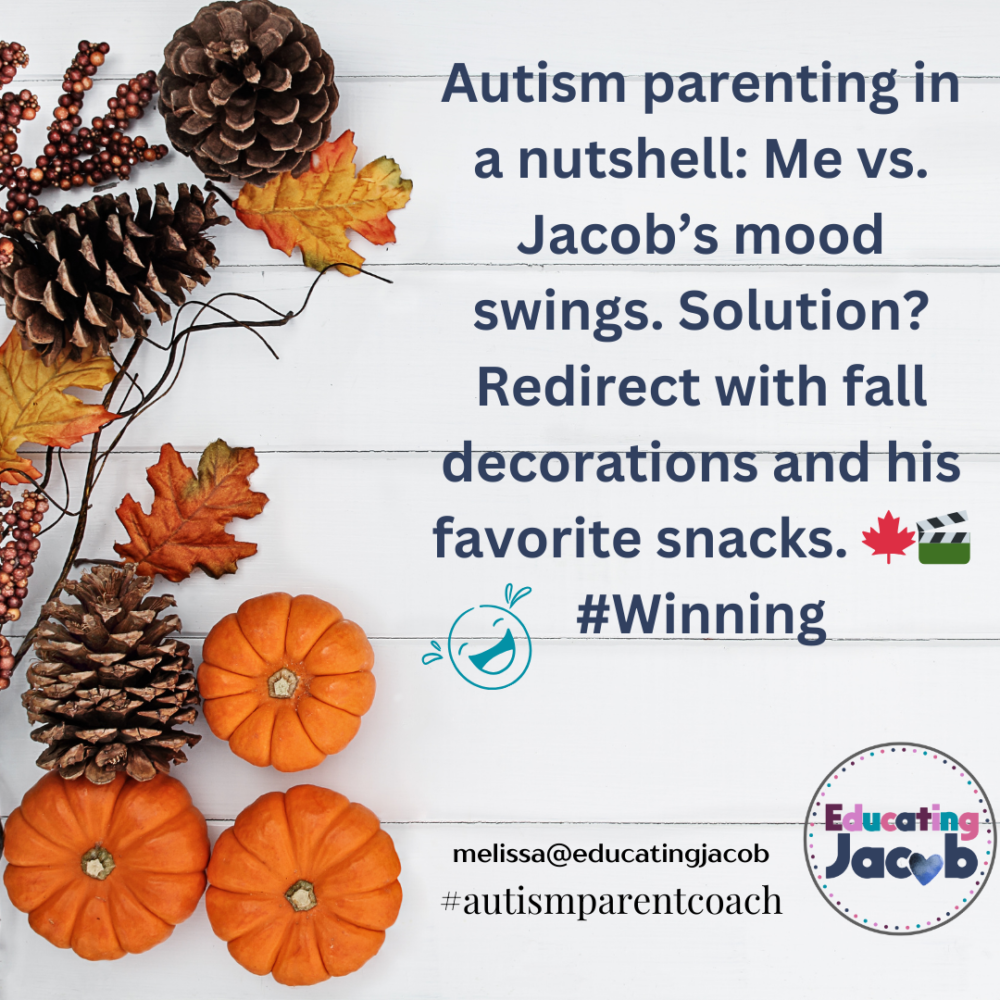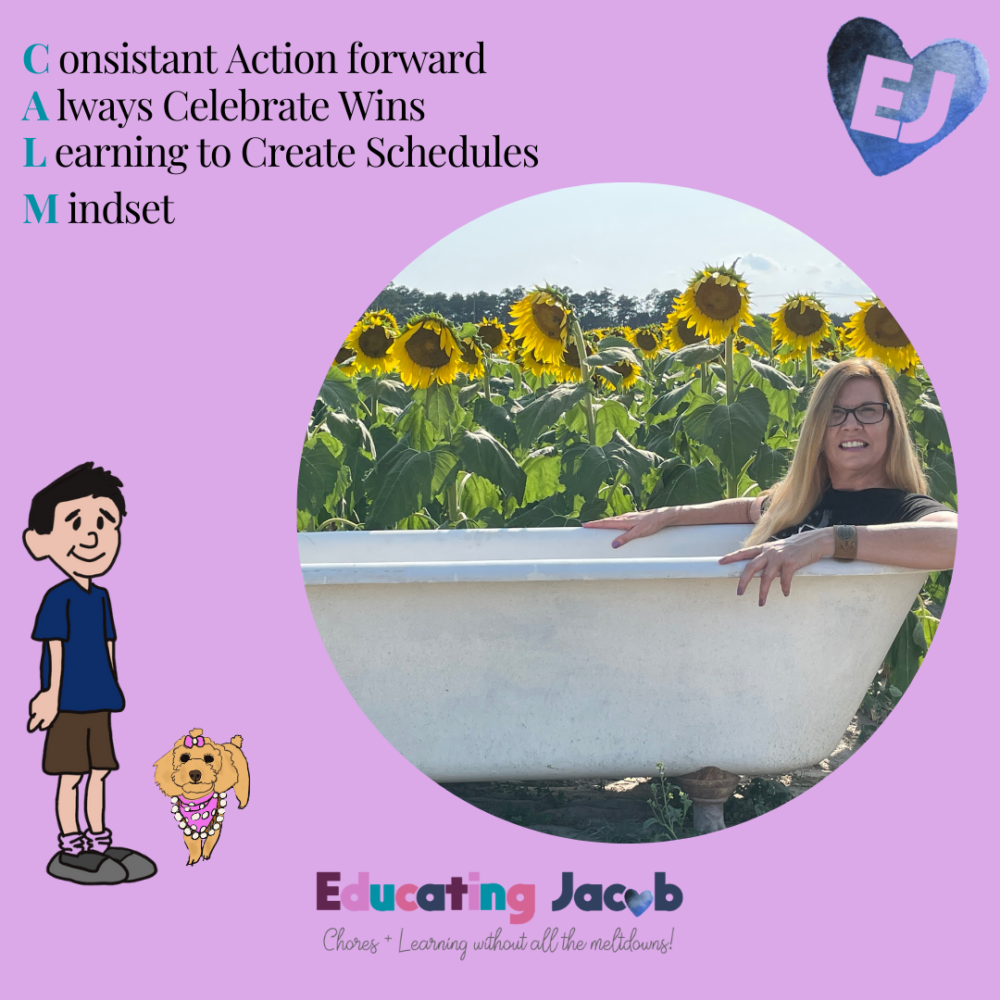How to stop stressing over Fall season changes? Autism season challenges.

Autism season challenges are real—especially when it comes to navigating seasonal changes. If you are a parent of an autistic child you already know this! Living here on Autism Island means that every shift in weather brings its own set of hurdles, and fall is no exception.
In North Carolina, the fall season is a time of false starts: one morning it’s chilly enough for a hoodie, and by afternoon, we’re back to T-shirts and shorts. For my son Jacob, these transitions are anything but simple. He’s still clinging to his favorite short-sleeved shirts and shorts, even when it’s time to bundle up. It’s not just about clothes—it’s about the emotional and sensory challenges that come with change. It takes Jacob a while to accept the new reality of cooler weather and swap his comfortable summer clothes for something unfamiliar.
In this post, we’ll dive into how you can help your child handle these seasonal transitions without stress and make the seasonal shift as smooth as possible. Let’s work together to make these changes more manageable for both you and your child. 🌟
Autism Season Challenges 🍁
Living on Autism Island means that when the seasons change, challenges are sure to follow. Here in North Carolina, fall is a time of false starts and unexpected weather shifts. One morning it’s cool, and Jacob might need a hoodie, but by afternoon, he’s back to wanting his short-sleeved shirts and shorts. The transition from summer to fall is particularly tough on Jacob, who has sensory sensitivities and a love for routine. Autism season challenges aren’t just about the weather—they’re about changing routines, sensory struggles, and working to make transitions easier for your child.
Fall Changes are Tough Autistic kids 🌧️👕
Children with autism often have rigid and ritualistic behaviors, which can make it hard to tolerate changes in routine. Jacob’s moderate autism makes seasonal transitions a major event. Not only does he have preferences for certain clothes and materials, but he also struggles with sensory issues. Anything he wears must be soft to the touch, with no tags or textured appliqués that might irritate him. He likes what he likes, and he wants to wear it over and over again. Check out this post I found 👉 https://holfamily.com/natural-solutions-for-sensory-processing-in-kids/
So when it’s time to swap out his favorite summer clothes for warmer fall attire, it’s the start of a season-long negotiation.
CALM Strategies for Autism Season Challenges 🗓️🍂
I’ve learned that to successfully navigate these autism season challenges, it’s essential to have a strategy in place—one that combines visual schedules, consistency, and redirection. These strategies are part of the CALM framework I use to guide Jacob through these transitions. Here’s how they break down:
1. Consistent Action Forward: Visual Schedules are Key 📅
When it comes to changes in routine, especially seasonal ones, consistency is key. Visual schedules are a game-changer for us. A schedule helps Jacob understand what’s coming next without overwhelming him with a lot of verbal explanations. Visuals allow him to see the sequence of his day and prepare for any changes, reducing anxiety and making him feel more in control.
For example, when the weather starts to change, I add a visual of a hoodie or pants to his schedule for the morning routine. It’s a gentle nudge that says, “Hey, it’s time to dress a little differently.” If he knows in advance that a change is coming, he’s much more willing to cooperate.
2. Incentives for Cooperation 🎉
Whenever Jacob follows his schedule, especially when it involves a change he’s not excited about, we make sure to celebrate. Our incentive system is simple: if Jacob sticks to his schedule for the week, on Fridays he can pick out something he likes on Amazon—a new movie, game, or toy. 🎮📦
This reward system helps him stay motivated and makes those tough transitions a little more bearable. It’s a win-win because Jacob feels rewarded for his efforts, and I get to see him learning how to manage changes with less stress. 4 Things I Wish I Would Have Known After Getting the Autism Diagnosis
3. Learning to Redirect: Shifting Focus to What He Loves 🎬🍁
One of the most effective strategies for handling resistance is redirection. If Jacob is struggling with putting on a hoodie or is upset about changing clothes, I’ll gently redirect his attention to something he enjoys. I might point to his schedule and say, “Look, we’re going to pick out a pumpkin later!” or “After this, we’ll have your favorite snack.” 🍪
Jacob loves movies, so sometimes I’ll use a movie quote or remind him of something we’re planning to do together. By redirecting his focus to something positive, I can help him move past his discomfort and prepare for the next step in his day. Stop engaging in power struggles! Use redirection for your autistic child.
4. Mindset Matters: Stay Calm and Consistent 💙🧠
One of the most important pieces of the CALM framework is mindset. If I get frustrated or let my tone become negative, Jacob’s attitude escalates right along with mine. I have to remind myself that Jacob isn’t purposely resisting change; he’s struggling to cope with it. By staying calm and consistent in my approach, I set the tone for the day and help guide him through those challenging moments.

Creating Strategies for a Smooth Transition 🧣🧦
Whenever possible, planning ahead is your best defense against autism season challenges. A schedule that includes not only the day’s activities but also clothing choices can help prepare your child for the shift in seasons. For the first few days of any change—whether it’s needing to wear a hoodie in the morning or switching to long pants—it’s going to be tough. But if you stay consistent with the schedule and maintain a calm, patient approach, those challenges will start to ease up.
Here are some practical strategies that work for us:
- Add clothing changes to the visual schedule: Make sure your child can see that there’s a new item of clothing expected for the day.
- Celebrate small wins: Every time they follow the schedule, reinforce that behavior with a reward or praise.
- Plan for redirection: When frustration starts to show, redirect their focus to something fun or comforting—like a favorite snack, a trip to pick out a pumpkin, or even a movie quote that makes them laugh.
- Stay calm and be consistent: Your mood can set the tone for theirs, so keep calm, and stick to your plan.
Facing Season Changes with Confidence 🌟
Season changes are never easy for children with autism, but with the right strategies, you can help your child feel more in control and less anxious. The first few days of any new routine will always be a little challenging, but with consistency, redirection, and visual schedules, you can make the transition smoother for everyone in the family.
Don’t be afraid to try new methods and tailor these tips to fit your child’s needs. Remember, every small step toward making these transitions easier is a big step forward for your family. Let’s face these autism season challenges together and create a season full of comfort, routine, and happiness. 🍁🌞

Today’s Tips and Strategies for Autism Season Challenges 🍁🧣
1. Use Visual Schedules 📅
Add clothing changes and seasonal activities to your child’s visual schedule. Seeing it ahead of time helps them prepare for what’s coming and reduces anxiety over transitions.
2. Be Consistent with Routines 🔄
Stick to your plan! Consistency builds trust and confidence. When you introduce new fall clothes or routines, keep them consistent each day until they become part of the norm.
3. Celebrate Small Wins 🎉
Praise your child for any cooperation with the new routine. Even if they wear that hoodie for just five minutes, it’s progress! A reward or positive reinforcement can go a long way.
4. Redirect and Stay Positive 🌟
When resistance happens, shift their attention to something fun or exciting. Bring up a favorite snack, a planned fall activity like picking out a pumpkin, or use movie quotes they love to lighten the mood.
5. Stay Calm and Breathe 🧘♀️
Your energy sets the tone. If you stay calm and patient during those tough moments, it’s easier for your child to do the same. Remember, change is hard for them, and your calmness is their anchor.
🧐 Struggling with daily routines and meltdowns?
🌟 As an autism parent coach, I help you transform chaos into calm by creating strategies that work for your family. 🌟
📅 Schedule a discovery call
👉🏼 Visit my contact page to get started: https://educatingjacob.com/contact/
#autismcoach #autismparentcoaching #autismandepilepsy #autismfamily💙#autismmom😎 #autismboymom😎 #autismchallenges🧩 #AutismParenting #DoctorVisitSuccess #EducatingJacob #AutismSupport #CalmParenting
